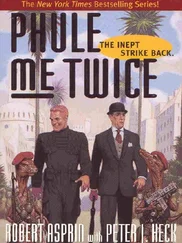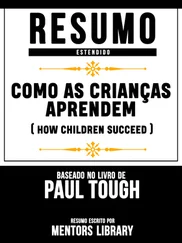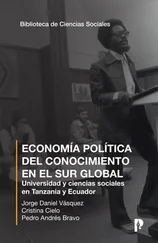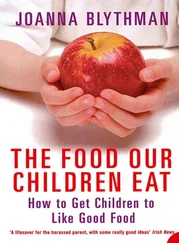Except we didn’t solve poverty. Some of the interventions that made up the War on Poverty were effective—but plenty of them weren’t. And plenty more seemed to do more harm than good. And if you’re someone who believes that smart people working through government can solve big problems, that is a harsh truth to acknowledge. It is painful to admit that making a significant dent in poverty has turned out to be a lot harder than we thought—and even more painful to admit that forty-five years later, we still don’t know quite what to do.
Something else has happened in the past decade or so that also helps explain why the poverty debate disappeared: it merged with the education debate. Education and poverty used to be two very separate topics in public policy. There was one conversation about the New Math and Why Johnny Can’t Read. And then there was another conversation about slums and hunger and welfare and urban renewal. But increasingly, there’s just one conversation, and it’s about the achievement gap between rich and poor—the very real fact that overall, children who grow up in poor families in the United States are doing very badly in school.
There are several reasons behind this merger. The first goes back to The Bell Curve, the controversial 1994 book about IQ by Charles Murray and Richard Herrnstein. Despite what I and many others believe to be its flawed conclusion—that racial differences on achievement tests are most likely the result of genetic differences between the races— The Bell Curve carried within it a very important new observation, which was that academic grades and achievement-test results are very good predictors of all kinds of outcomes in life: not just how far you’ll go in school and how much you’ll earn when you get out, but also whether you’ll commit crimes, whether you’ll take drugs, whether you’ll get married, and whether you’ll get divorced. What The Bell Curve showed was that kids who do well in school tend to do well in life, whether or not they come from poverty. Which led to an intriguing idea, one that appealed to social reformers all along the political spectrum: if we can help poor children improve their academic skills and academic outcomes, they can escape the cycle of poverty by virtue of their own abilities and without additional handouts or set-asides.
In the late 1990s and early 2000s, this idea gained momentum because of two important phenomena. One was the passage of the No Child Left Behind law, in 2001. For the first time, the law forced states and cities and individual schools to compile detailed information on how their students were performing—and not just the student population as a whole but individual subgroups as well: minority students, low-income students, English-language learners. Once those numbers started coming in, the achievement gaps they reflected became impossible to avoid or deny. In every state, in every city, at every grade level, in almost every school, students from low-income homes were doing much worse than students from middle-class homes—they were two or three grade levels behind, on average, by the time they left middle school. And the achievement gap between rich and poor was getting worse every year.
The other phenomenon was the emergence of a group of schools that seemed to defy the achievement gap: the KIPP schools and others in the same mold, like Amistad Academy in New Haven, Roxbury Prep in Boston, and North Star Academy in Newark. The initial wave of astounding test scores that David Levin and Michael Feinberg and other educators were able to help their students produce captured the public’s imagination. It seemed these teachers had come up with a reliable, replicable model for inner-city-school success.
And so these three facts came together to form a powerful syllogism for people who cared about poverty: First, scores on achievement tests in school correlate strongly with life outcomes, no matter what a student’s background. Second, children in low-income homes did much worse on achievement tests than children in middle-income and high-income homes. And third, certain schools, using a very different model than traditional public schools, were able to substantially raise the achievement-test scores of low-income children. The conclusion: if we could replicate on a big, national scale the accomplishments of those schools, we could make a huge dent in poverty’s impact on children’s success.
This was a very different way of looking at poverty than what had come before. It was exciting to many people, myself included, primarily because so much else hadn’t worked. We’d tried welfare payments to poor mothers, we’d tried housing subsidies, we’d tried Head Start, we’d tried community policing. And for the most part, poor children weren’t doing any better. But now it seemed that if we could make public schools more effective—much more effective—the schools could become a more powerful antipoverty tool than anything we had previously tried. It was a transformative idea. And it sparked a movement: the education-reform movement.
4. A Different Kind of Reform
In the movement’s earliest days, its proponents hadn’t quite decided what they were moving toward. They shared a vision—a national landscape of schools that performed as well for low-income children as KIPP schools did—but they disagreed on which policy mechanisms might best help to realize that vision. Was it vouchers? A national curriculum? More charter schools? Smaller class size? Now, a decade later, education reformers have mostly united around one specific issue: teacher quality. The consensus of most reform advocates is that there are far too many underperforming teachers, especially in high-poverty schools, and the only way to improve outcomes for students in these schools is to change the way teachers are hired, trained, compensated, and fired.
This argument has its intellectual roots in a handful of research papers published in the late 1990s and early 2000s by economists and statisticians, including Eric Hanushek, Thomas Kane, and William Sanders, that claimed it was possible to identify, through a statistical method known as value-added, two distinct groups of teachers: those who could regularly raise the achievement level of their students and those whose students consistently fell behind. This idea led to a theory of change: if an underperforming low-income student was assigned for multiple years in a row to a high-quality teacher, his test scores should continually and cumulatively improve, and after three or four or five years, he would close the achievement gap with his better-off peers. And to take the idea one step further: if school systems and teacher contracts could somehow be overhauled so that every low-income student had a high-performance teacher, the achievement gap could be eliminated altogether.
In the past few years, this theory has been embraced at the highest levels of government. The main education initiative of the Obama administration, in fact, has been to offer states competitive incentives to rewrite or amend their laws governing the teaching profession. Many states have taken the federal government up on the offer, with the result that various experimental notions on teacher compensation, evaluation, and tenure are now being tested, in a variety of forms, in school systems across the country. At the same time, the Gates Foundation, which spends more money on education than any other philanthropy, has embarked on a three-hundred-million-dollar research project called Measures of Effective Teaching to try to answer definitively the questions of what good teaching is and how to create a better national teaching force.
Despite this consensus among reformers, the national push on teacher quality has been quite controversial. Teacher unions, especially, fear that it is a not-so-subtle attempt to undermine many of the professional protections that they have fought for over the past several decades. And whatever your opinion on unions, the fact is that the research on teachers remains inconclusive in some important ways. First, we don’t yet know how to reliably predict who will be a top-tier teacher in any given year. Sometimes teachers who seem to be failures suddenly make great strides with their students. Sometimes brilliant teachers suddenly go downhill. And we still don’t know if it’s true that a string of excellent teachers will produce a cumulative positive effect on the performance of low-income students. It seems to make sense that having a top-tier teacher three years in a row would raise a student’s achievement three times as much as his having a top-tier teacher for a single year—but it might not. Maybe the effect fades out after a single year. So far, there’s just no solid evidence one way or the other.
Читать дальше



![Коринн МакКей - How to Succeed as a Freelance Translator [calibre 3.46.0]](/books/402693/korinn-makkej-how-to-succeed-as-a-freelance-transl-thumb.webp)








